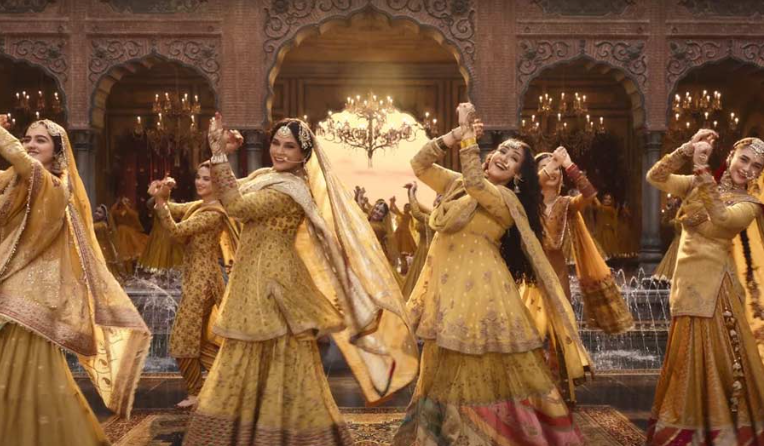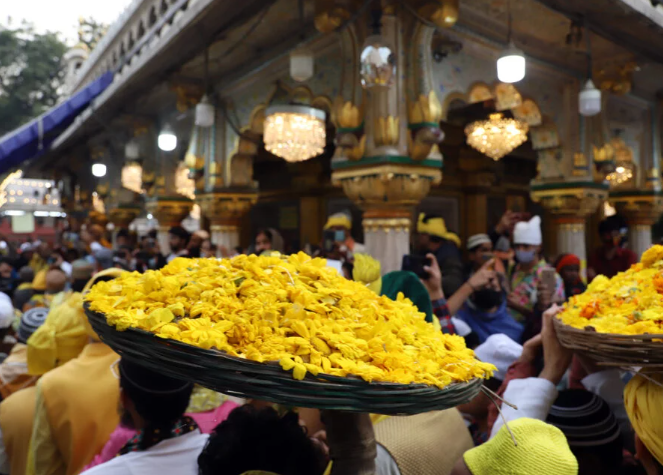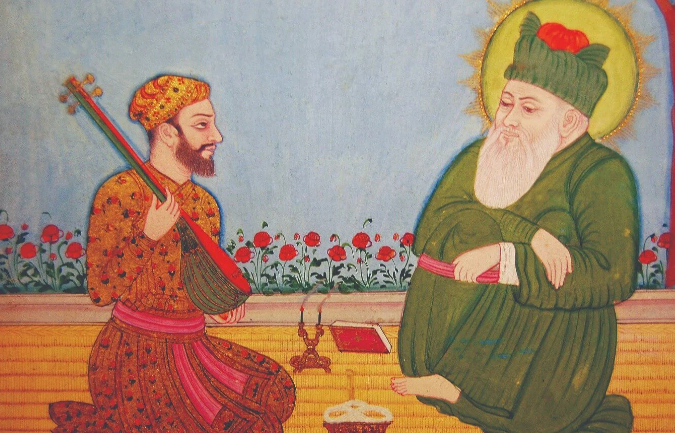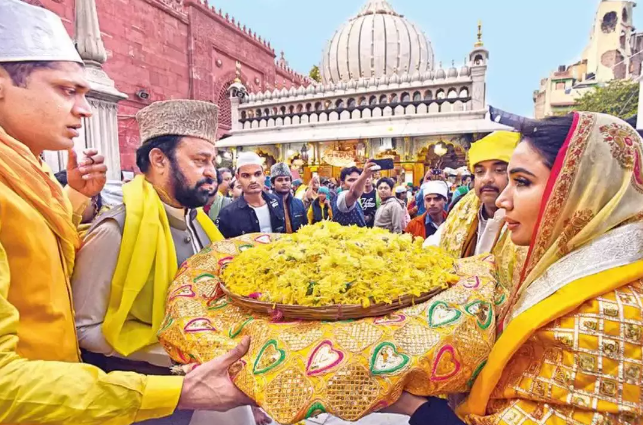“Phool Rahi Sarson”, a song from Heeramandi, a rich tapestry of history, tradition, and devotion that spans over 700 years. Written by the iconic poet Amir Khusro, the song carries the weight of an age-old story of love and reverence. Let’s take a deeper look into the legend that inspired this beautiful song.

A BASANT PANCHAMI TRADITION
The story begins on a lively Basant Panchami day, a festival that marks the arrival of spring. Streets were filled with people dressed in golden-yellow attire, carrying mustard flowers, heading towards the temple to offer prayers. As Amir Khusro wandered through the streets, he noticed the joyful mood and the beautiful yellow blooms.
Curious about the ritual, Khusro asked the devotees why they carried the mustard flowers. They explained that the yellow flowers symbolize spring’s arrival and are offered to the gods to bring happiness and prosperity. Conse3quently, moved by their devotion, Khusro decided to do something special of his own.

KHUSRO’S GESTURE OF LOVE
Amir Khusro was not only a special poet but also a devoted disciple of Hazrat Nizamuddin Aulia, a Sufi saint who was mourning the loss of his nephew. To bring joy to his grieving mentor, Khusro gathered a bouquet of mustard flowers and made his way to Nizamuddin’s dargah.
In his signature playful style, Khusro approached his mentor, singing and dancing with the bouquet of mustard flowers in his hands. His vibrant entrance was meant to lighten Nizamuddin’s heart. Consequently, Khusro then offered the flowers to his mentor, saying that just as people give these blooms to their gods on Basant Panchami, he was offering them to his god, Nizamuddin.

This heartfelt gesture not only lifted Nizamuddin’s spirits but also the strart of a unique tradition that continues to this day.
THE LEGACY OF YELLOW
The bond between Khusro and Nizamuddin became immortalized in this act of devotion. Even today, on every Basant Panchami, devotees at Hazrat Nizamuddin’s dargah in Delhi continue to offer yellow mustard flowers and drape a yellow chadar over the saint’s tomb in honor of Khusro’s original gesture. Consequently, the vibrant yellow of the mustard flower became more than just a symbol of spring. It became a symbol to the eternal love between Khusro and his mentor.

MORE THAN A SONG:”PHOOL RAHI SARSON”
The song “Phool Rahi Sarson” beautifully captures the essence of that centuries-old tradition. The use of yellow in the song’s picturization represents the mustard flowers that have been offered for generations. It serves as a reminder of a time when love and devotion were expressed through the simple act of offering flowers, and how that gesture has transcended time.
So, when you hear Phool Rahi Sarson, you’re not just hearing a song. You’re experiencing a 700-year-old legacy of joy and the everlasting connection between Khusro and Nizamuddin.

